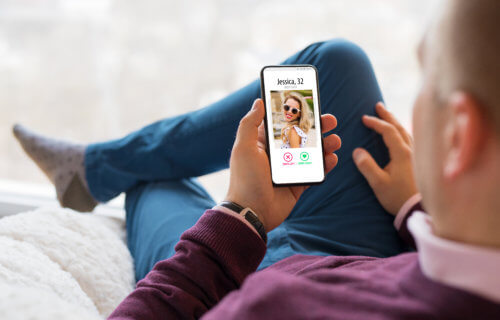EAST LANSING, Mich. — Online dating became a way of life for millions of singles during the coronavirus pandemic. Dating apps like Match.com, Tinder, and OK Cupid are responsible for 10% of the long-lasting adult relationships in America, according to a Pew Research study. And as it turns out, these daters aren’t wasting time when it comes to choosing who to “swipe right” on. A recent study shows that users know within a second whether or not to express interest in someone else.
So what makes someone choose to “make the move” on a profile? Researchers say it comes down to judging the book by its cover. The attractiveness of a person is primarily what compels another to swipe right, the study finds. Within a split second, the user determines whether or not they will accept a date based on appearance, and even race.
“Despite online dating becoming an increasingly popular way for people to meet one another, there is little research on how people connect with each other on these platforms,” explains Dr. William Chopik, an associate professor in the Michigan State University Department of Psychology, in a statement. “We wanted to understand what makes someone want to swipe left or swipe right, and the process behind how they make those decisions.”
The research team divided the online dating study into two parts. One part only included college students. The other focused on a group of adults, most of whom were around the age of 35.
Participants in each study were asked to choose between various dating profiles. Researchers gauged each participant’s interaction to determine their motive behind it. On average, female participants made fewer choices than males, indicated by swiping left more often. Also, the study found that swiping left was more common for those who saw themselves as more attractive, suggesting they have picky dating preferences.
“It’s extremely eye-opening that people are willing to make decisions about whether or not they would like to get to another human being, in less than a second and based almost solely on the other person’s looks,” says Dr. Chopik. “Also surprising was just how little everything beyond attractiveness and race mattered for swiping behavior – your personality didn’t seem to matter, how open you were to hook-ups didn’t matter, or even your style for how you approach relationships or if you were looking short- or long-term didn’t matter.”
The motive behind the swiping direction was primarily appearance. Participants on average only swiped right for those who were of the same race. Also, participants chose profiles of White users more often than those of color.
“The disparities were rather shocking,” coments Chopik. “Profiles of Black users were rejected more often than White users, highlighting another way people of color face bias in everyday life.”
Looking ahead, Chopik and his team are studying how online daters respond to those who swiped right on their profile. So far, results reveal that people who likes a profile first are more likely to be accepted by that person, regardless of an unappealing profile or if the person is not as attractive.
“We like people who like us,” says Dr. Chopik. “It makes sense that we want to connect with others who have shown an interest in us, even if they weren’t initially a top choice.”
This study is published in Science Direct.
